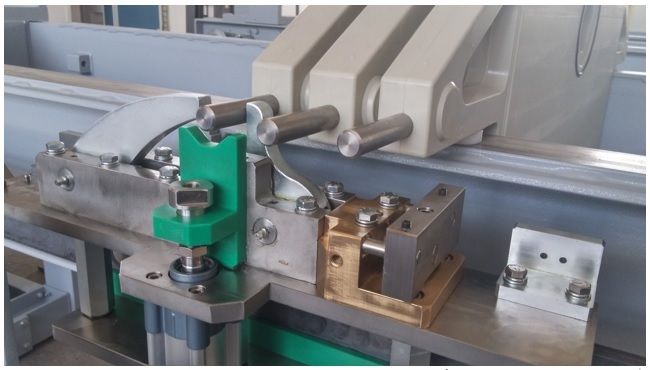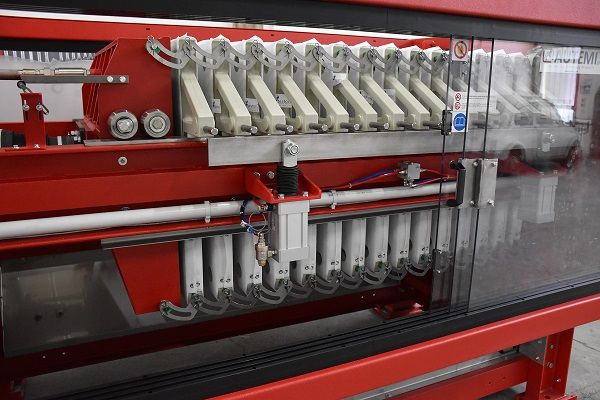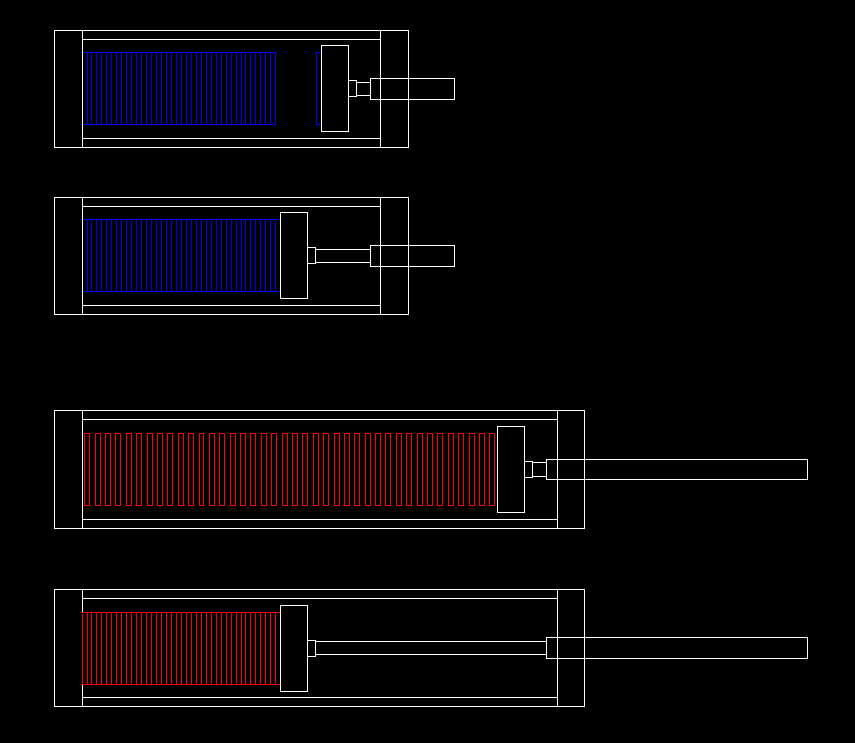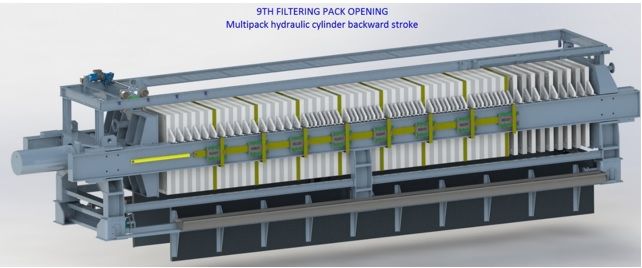We have seen previously how one of the discriminating factors regarding how to define a fully automatic filter press is precisely the opening system of the filter plates. Let us now analyse the functioning of the opening systems of the filter plates in the filter press.
If we take the side beam filter presses as a reference, there are essentially two opening systems: the “At Once” one (that is, all the plates open together) also called “simultaneous” and the “One by One” one (a filter plate is opened at time).
Therefore, unlike a simultaneous filter, in which the opening system is simultaneous, the One-by-One automatic provides for the removal of one plate at a time.
The latter type of machine is normally used in filtrations where there may be a risk that the sludge cake does not completely detach from the cloth.
ONE BY ONE OPENING – ONE PLATE AT A TIME
In fact, with the One-by-One automatic type, the operator can interrupt the plate opening cycle of the machine and intervene manually to remove the panel that has remained attached.
This opening system of the filter plates is optimal for leaving the necessary manoeuvring space for the operator in case he needs to intervene.
This operation would in fact be much more problematic in the case of a simultaneous filter, as there would not be the physical space necessary between one plate and another to carry out the cleaning.
This is due to the fact that the space between the plates is slightly larger than a panel (during the opening, the necessary space is left to allow the panel to fall easily).
With the One by One automatic type, the operator can interrupt the machine’s plate-opening cycle and intervene manually to remove the panel still attached.
This system of opening the filter plates is optimal in order to leave the necessary room for manoeuvre for the operator in case he has to intervene.
Such an operation would in fact be much more problematic in the case of a simultaneous filter, as there would not be the physical space needed between one plate and the other to carry out cleaning.
This is due to the fact that the space between the plates is little larger than a panel (during opening, the necessary space is left to allow the panel to fall easily).
The data regarding the filterability and adhesion of the sludge must come from the laboratory which, on the basis of the tests carried out, will give a response aimed at identifying the type of machine to be used.
Furthermore, the “One by One” automatic filter is normally used in all those “traditional” cases in which the filtration phase does not have to be fast.
On the contrary, the simultaneous, having the practically instantaneous opening and closing operations, is used in process filtration in which I need very fast cycles and I am sure that the cake will detach completely.
As far as the actual layout of the machine is concerned, a One-by-One automatic filter requires a trolley shaker unit on both sides of the machine.

In addition to this, photoelectric barriers are normally fitted: under normal operating conditions, when these are intercepted (i.e. when the operator gets too close to the running machine or when he purposely wants to do so in order to clean the plies) they stop the machine and send it to a standstill.
The unlocking and therefore the
restart of the machine in this case is only possible by acting on the reset button
reset button usually located both on the control panel and on the machine.
In addition to this difference at the mechanical level, there is another that is intrinsic to the plate opening system and therefore influences the length of the hydraulic cylinder: in a machine with One by One opening, the hydraulic cylinder must have a fairly short stroke, typically 400 or 500 mm, in order to provide the necessary space for the operator to clean any residue between one plate and the next.
Instead, in the system of simultaneous opening, between each plate and the next, there must be a space necessary for the exhausted cake to fall. Therefore, ultimately, the stroke that the cylinder must complete is proportional to the number of plates and the filtering chamber. The operation of the opening systems of the filter plates in the filter press in fact influence the layout of the machine itself.

This explains why there is a physiological limit to how many plates I can install in a simple simultaneous machine, since I cannot have a hydraulic cylinder that is too long due to mechanical construction and resistance problems due to peak load.

This can be seen in the upper image, in which the length of two machines with different opening systems are compared, with the same number of filter plates installed.
This introduces us to the next machine model which represents the evolution of the simultaneous operation of the filter press in the event that there are several filter plates that require an opening at once: I am talking about the “Multiple Pack“. In this type of machine, the number of filter plates required is divided into several sections, for example: 8 sections of 30 plates; each section opens simultaneously. When the opening of a section is finished, I proceed with the opening of the next section.
